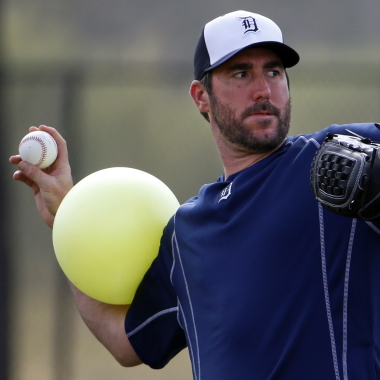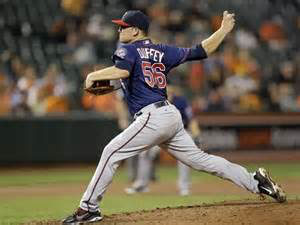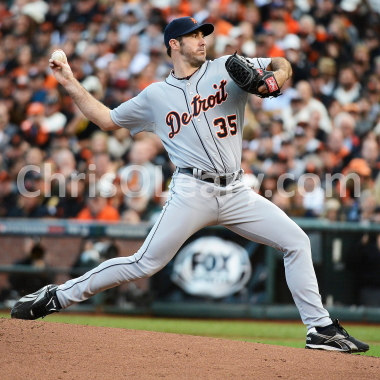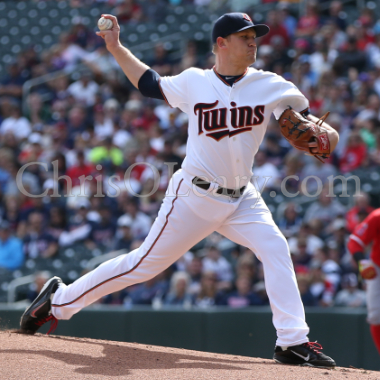| ChrisOLeary.com |
| ChrisOLeary.com > BUY > Pitching > Phony Flaws in Pitching |
|
And might even be GOOD. An example of a Phony Flaw is Forearm Flyout, the Phony Flaw that goes a long way towards explaining what happened to Justin Verlander. 
In sum, JV broke because a pitching guru named Ron Wolforth diagnosed him with Forearm Flyout and broke him in the process of trying to fix him and it, with the help of the Connection Ball. Phony Flaws in Pitching(Pitching) Forearm Flyout is a term I first heard Dr. Mike Marshall use, but it seems Ron Wolforth has adopted — or, more accurately, co-opted — it. Dr. Mike MarshallMarshall's theory is that, in order to protect their elbows, pitchers want to do what Clayton Kershaw is doing. In the picture below, Kershaw is pronating his forearm into and through the release point, so that his pitching elbow doesn't fully extend, preventing the bones of the elbow joint from banging together. 
Clayton KershawThat's why Kershaw's pitching arm isn't fully extended and in line with a line drawn through his shoulders, as you see when looking at Arm Slot. Instead, there's still some flex in his elbow. All of which seems like a good idea. Ron WolforthRon Wolforth uses the term Forearm Flyout to describe something different; what most would describe as Long-Arming (as opposed to Short-Arming). And which I discuss in my piece on... I wasn't completely sure what Ron Wolforth was talking about until I listened to his interview on the YBE podcast — YBE 031: Digging Deeper Into Better Pitching (Part 2) with Ron Wolforth — and looked at the accompanying photos. 
Forearm FlyoutEverything came into sharp focus with the April 19, 2019 article Justin Verlander wants to be the Tom Brady of baseball. In Verlander's case, the fix took a village. One of the key members of Verlander Village (besides the life-saver physical therapist and the ass-to-grass trainer) is Ron Wolforth, a mechanics guru who has worked with Scott Kazmir and Trevor Bauer, among others. Wolforth helped Verlander realize his core injury had caused him to start compensating. Instead of his right arm being bent 90 degrees and looking like the letter L prior to delivery, Verlander's hand had started to drift down and away from his head, creating an obtuse angle that more closely resembled a V and sapped some giddy-up from the hurler's heater. To fix the problem, Wolforth prescribed something called a connection ball. A squishy, inflatable sphere that's wedged between the biceps and forearm and can stay there only with proper 90-degree mechanics, the tool worked wonders on his arm posture. "It started creeping up and up and up, and I started feeling better and better and better," says Verlander, who still keeps a turquoise connection ball in his locker, just in case his mechanics start to stray. "I started throwing harder and harder and harder again, and that was that. It was off and running." But, here's the problem. I remain unconvinced that Long-Arming is bad. Among other things, Justin Verlander was clearly a Long-Armer during his prime in Detroit. 
Justin Verlander
|
| about | contact | copyright | sitemap | liability policy |

 e
baseball and reported in The American Journal of Sports Medicine
(Aguinaldo and Chambers), if a pitcher's torso begins to rotate
toward the hitter prior to the moment when his front foot hits the
ground, or if at that point in the delivery, the angle between his
forearm and his humerus exceeds 90 degrees, there will be
significantly increased levels of torque on the ulnar collateral
ligament. (Am J Sports Med October 2009 vol 37 no10 2043-2048)
e
baseball and reported in The American Journal of Sports Medicine
(Aguinaldo and Chambers), if a pitcher's torso begins to rotate
toward the hitter prior to the moment when his front foot hits the
ground, or if at that point in the delivery, the angle between his
forearm and his humerus exceeds 90 degrees, there will be
significantly increased levels of torque on the ulnar collateral
ligament. (Am J Sports Med October 2009 vol 37 no10 2043-2048)

